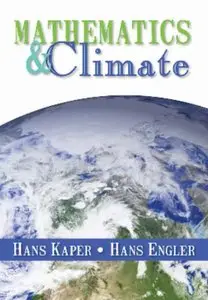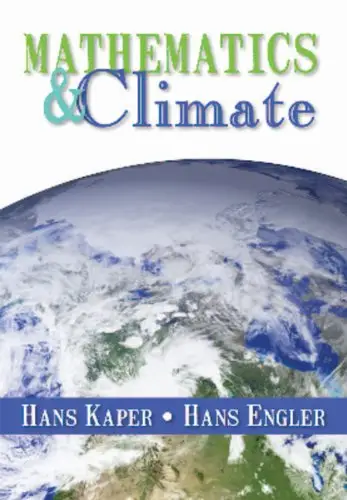Mathematics and Climate by Hans Kaper and Hans Engler
English | 2013 | ISBN: 1611972604 | ISBN-13: 9781611972603 | 317 pages | PDF | 12,7 MB
English | 2013 | ISBN: 1611972604 | ISBN-13: 9781611972603 | 317 pages | PDF | 12,7 MB
Winner of the Atmospheric Science Librarians International Choice Award for 2013 as the best book in the fields of meteorology, climatology, or atmospheric sciences, Mathematics and Climate is a timely textbook with wide appeal.
It is aimed at students and researchers in mathematics and statistics who are interested in current issues of climate science, as well as at climate scientists who wish to become familiar with qualitative and quantitative methods of mathematics and statistics. The authors emphasize conceptual models that capture important aspects of Earth's climate system and present the mathematical and statistical techniques that can be applied to their analysis.
Topics from climate science include the Earth s energy balance, temperature distribution, ocean circulation patterns such as El Niño Southern Oscillation, ice caps and glaciation periods, the carbon cycle, and the biological pump. Among the mathematical and statistical techniques presented in the text are dynamical systems and bifurcation theory, Fourier analysis, conservation laws, regression analysis, and extreme value theory.
The following features make Mathematics and Climate a valuable teaching resource: issues of current interest in climate science and sustainability are used to introduce the student to the methods of mathematics and statistics; the mathematical sophistication increases as the book progresses and topics can thus be selected according to interest and level of knowledge; each chapter ends with a set of exercises that reinforce or enhance the material presented in the chapter and stimulate critical thinking and communication skills; and the book contains an extensive list of references to the literature, a glossary of terms for the nontechnical reader, and a detailed index.
Audience: Mathematics and Climate is intended for mathematicians, statisticians, data scientists, and geoscientists in academia, national laboratories, and public service organizations interested in current issues of climate and sustainability. It is written at the level of advanced undergraduate and beginning graduate students and assumes only basic familiarity with linear algebra, calculus, elementary differential equations, and statistics.
Contents: Chapter 1: Climate and Mathematics; Chapter 2: Earth s Energy Budget; Chapter 3: Oceans and Climate; Chapter 4: Dynamical Systems; Chapter 5: Bifurcation Theory; Chapter 6: Stommel s Box Model; Chapter 7: Lorenz Equations; Chapter 8: Climate and Statistics; Chapter 9: Regression Analysis; Chapter 10: Mauna Loa CO2 Data; Chapter 11: Fourier Transforms; Chapter 12: Zonal Energy Budget; Chapter 13: Atmosphere and Climate; Chapter 14: Hydrodynamics; Chapter 15: Climate Models; Chapter 16: El Niño Southern Oscillation; Chapter 17: Cryosphere and Climate; Chapter 18: Biogeochemistry; Chapter 19: Extreme Events; Chapter 20: Data Assimilation; Appendix A: Units and Symbols; Appendix B: Glossary; Appendix C: MATLAB Codes.



